Kamidana
What are kamidana?
Kamidana 神棚 (literally “kami shelves”), are home altars used to worship kamisama. They are usually above standing eye level, though sometimes exceptions are made. If you live in an apartment, you can use floating shelves, the top of a bookshelf, etc. - the most important aspect is that the kamidana is placed high up, ideally at the highest location in your room. Kamidana should face east, south or southeast, and it is generally said that you should not set your kamidana up to face a butsudan (a Japanese Buddhist ancestor altar - don’t go making one of these for your ancestors unless they were Japanese Buddhist). Also avoid placing kamidana above doors and near or in bathrooms. No matter where you live, if your kamidana is on the first floor and there is a room above it, it is good to write either the letter 雲 (cloud) or 空 (sky) in sumi ink on paper and place it on the ceiling facing down above the kamidana. An alternative is to purchase a kumoita 雲板 or a premade wooden cut-out letter of cloud/sky. You can see an example here:
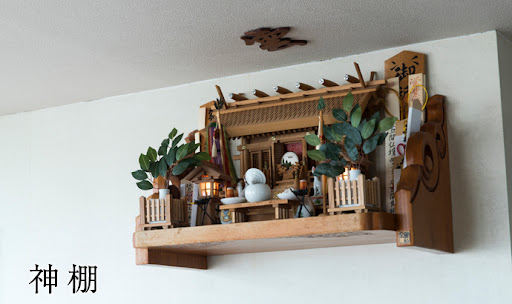
The kumoita is the wavy shaped wooden board at the top/front of the kamidana. I was taught having the kumoita or the letter for sky or cloud is important since the importance of it is to show kamisama you do not want to step on them by creating a sky/cloud above them. Here is an example with a kumoita clearly visible at the top:
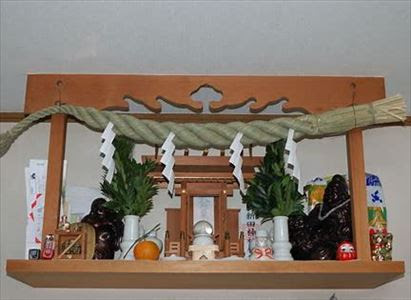
The branches at the right and left are of the sakaki 榊 tree, which are very important in Shinto. Some people use artificial sakaki branches, preserved ones or local evergreen tree branches. This is good to have, but not essential. The ceramics you see are called shinki 神器, and are not necessarily essential, but a dedicated set of dishes to offer rice and salt is very important, even if it is not specifically purpose-made shinki.
Offerings and Offering Vessels
The most important, standard offerings in Shintō are rice, water, and salt. Sake is only offered on special occasions. With all three of these, you must consume them eventually – usually one offers them in the morning and takes them down at night. You can offer once or twice a day, ideally before each meal. I usually store my offerings and put the water in my normal drinking cup to drink. You can also water your plants with the water. The rice can be cooked or uncooked, but if you are concerned about pests and such, you can pray and then immediately take it down. You can offer any kind of food to kamisama, but it is generally taboo to offer them meat (other than fish, which is usually offered whole) and it is definitely not good to leave bones, fur etc. on a kamidana.
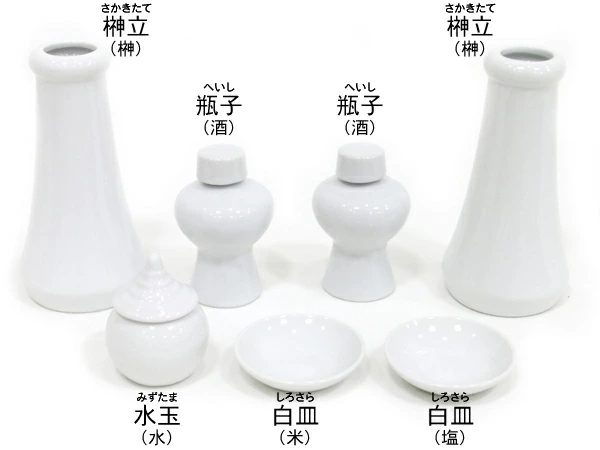
Each shingu 神具, or offering vessel, has a name. Rice and salt are stored on the small dishes at bottom right labeled shirosara 白皿. Water is kept in a special lidded container called a mizutama 水玉, seen at bottom left, and the lid is left laying on its side like so:
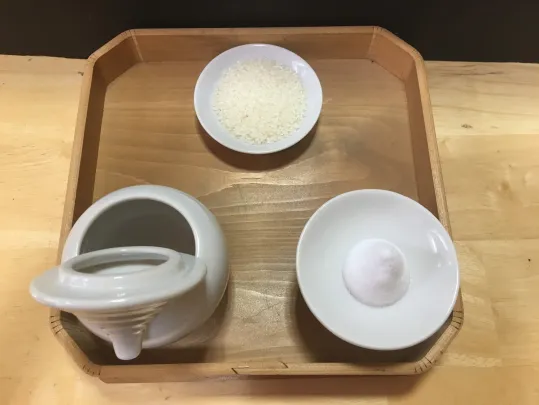
Notice the wooden tray these items are on. that is a Sanbo.
Sanbo:
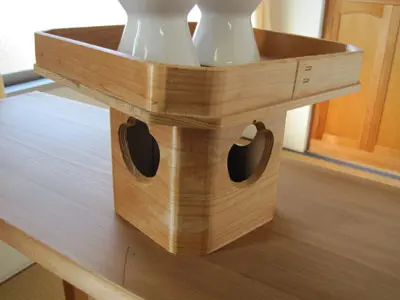
There is a specific format to follow when giving offerings. This will depend on if you have a sanbo or not. If your altar is on the top of a shelf, there is no need to worry.
Kamidana setup when using a sanbo:

Kamidana setup without using a sanbo:

Many kamidana, but not all, often have a sacred piece of hemp rope with rice paper on it called a shimenawa 注連縄 visible in the above examples. This is also common at shrines, and denotes that the area behind it is a sacred place. Shimenawa are generally changed yearly, like ofuda.
Parts of a kamidana
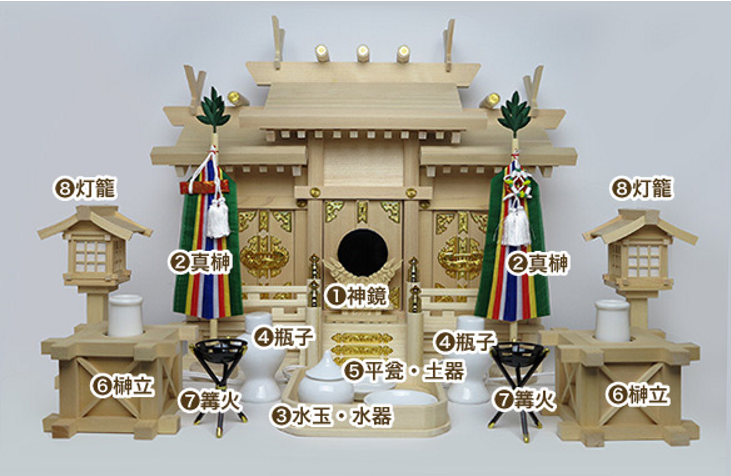
Finally, the most important part, the core of a kamidana, is the ofuda. An ofuda can only be obtained at a shrine. You must never make one yourself. It is a slip of paper or small wood plank that has been blessed by the priests at the shrine, with the shrine’s name on it. Most shrines require you to get a new one every new years (sending your old one in, or bringing it in person to be burnt and purified at the end of the year). This must be handled as a person if you travel with it, not placed in a suitcase. It contains part of kamisama, and is kamisama too.
2024/03/15 up